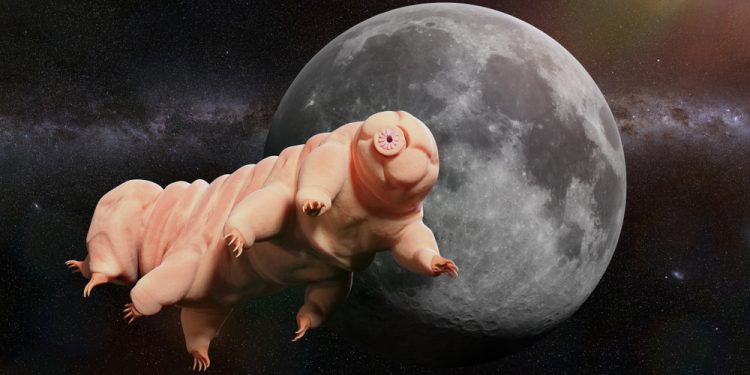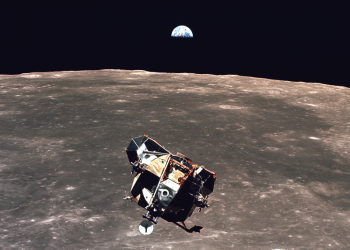Tardigrades live up to their name. These tiny creatures, most of which cannot be seen without a microscope or, in extreme cases, a magnifying glass, can overcome no more than 2-3 millimeters in a minute. However, it is not for nothing that they live according to the principle “the quieter you drive, the further you will be.” Small water bears, as they are also called, have phenomenal vitality. They withstand extreme temperatures and high levels of radiation and can survive in outer space without harm.
10 Interesting Facts About Tardigrades
Tardigrades are practically indestructible
Tardigrades are known for their exceptional vitality – distributed throughout the world, tardigrades prefer moist soils and moss, but can live high in the mountains and on the ocean floor.
Tardigrades have survived all five mass extinctions in Earth’s history and can endure temperatures ranging from -272°C (-457°F), just above absolute zero, to 150°C (302°F).
New species get discovered every year
The tardigrade was discovered at the end of the 18th century. Since then, more than a thousand species of tardigrades have been identified, and this number is constantly growing. New species are found quite often, sometimes in rather strange places, for example, in roadside dust.
Tardigrades literally look like an alien
Small water bears look a little ridiculous: a head, consisting of segments of the body and four pairs of legs, ending in four or eight claws, or attachment plates. Their mouth opening looks like a suction cup, and in it, there are two sharp stylets. With their help, Tardigrades pierce the walls of plant cells or the integument of small invertebrates that they feed on.
Tardigrades can enter a state of suspended animation
When faced with extreme conditions, tardigrades enter a state called cryptobiosis, in which they lose up to 98% of their body water and shrivel into a dry, almost lifeless form called a tun. In this state, their metabolism slows to 0.01% of normal activity, effectively making them biologically immortal until conditions improve.
Almost nothing can kill them
Even more astonishing is their resilience to high pressures – they can withstand 6,000 times atmospheric pressure, far beyond what is found in the ocean’s deepest trenches.
Additionally, they are resistant to intense radiation. While 10 grays (Gy) of radiation can kill a human, tardigrades can survive up to 5,000 Gy, thanks to their unique ability to repair DNA damage. This extreme durability suggests that tardigrades could potentially survive space travel for extended periods, making them key subjects in astrobiology research.

Tardigrades can survive in open space
Moreover, tardigrades are able to survive in organic solvents, under the influence of toxic gases, and even in open space. When favorable conditions come, tardigrades quickly return to life, retaining the ability to reproduce. At the same time, little is known about the reasons for such survivability.
Scientists don’t fully understand their survivability
Scientists are only now beginning to understand exactly how tardigrades exhibit such endurance. For example, studies have shown that the species Ramazzottius varieornatus protects its genome from ionizing radiation using the Dsup protein, which forms stable complexes with DNA.
Their DNA is partially borrowed from other organisms
A couple of years ago, scientists seemed to get close to the secret of the tardigrade. They argued that about 17 percent of its genes in the course of evolution were “borrowed” from other organisms, including extremophile bacteria.
However, a later study found that no more than 1.2 percent of genes are borrowed from other living things, meaning that the tardigrades managed to find ways to survive in the extreme themselves.
They have been sent to outer space – and survived
Tardigrades were first sent into space in 2007 aboard the European Space Agency’s FOTON-M3 mission, where they survived vacuum exposure, cosmic radiation, and unfiltered UV rays. In 2011, another experiment on the Space Shuttle Endeavour confirmed that they could also reproduce in microgravity.
In 2019, an experiment went awry when a crash-landed Israeli lunar probe (Beresheet) scattered thousands of tardigrades on the Moon. Although unconfirmed, some scientists believe they could still be alive, waiting for favorable conditions to reactivate.
Scientists suggest using Tardigrades to modify human DNA
In 2019, American geneticists suggested crossing tardigrade DNA with human DNA to “engineer” the health of future astronauts that will be sent to Mars. Reportedly, this could help them adapt to the extreme environment on the Red Planet and possibly, other Earth-like planets.
Join the discussion and participate in awesome giveaways in our mobile Telegram group. Join Curiosmos on Telegram Today. t.me/Curiosmos
Sources:
• Bradford, A. (2017, July 14). Facts about tardigrades.
• Carleton.edu. (2021, May 12). Tardigrades.
• Gohd, C. (2019, November 07). Can we genetically engineer humans to Survive missions to Mars?
• Jönsson, K. (n.d.). Tardigrades survive exposure to space in low Earth orbit.











